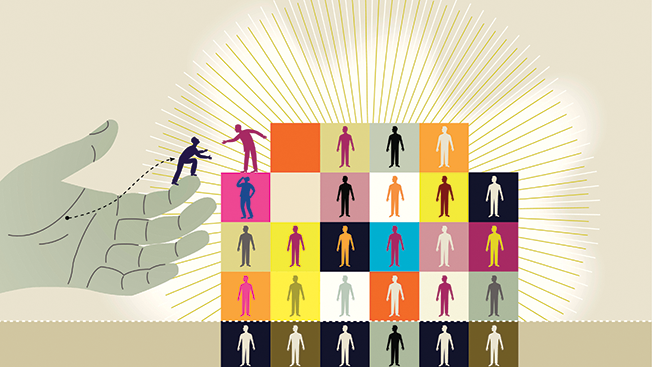As CEOs and CMOs have demanded greater control of corporate messaging and tighter rein over budgets, in-house advertising and communications agencies have multiplied and expanded. In 2008, 42 percent of member companies in the Association of National Advertisers had in-house agencies. Five years later, that figure rose to nearly 60 percent. These internal resources can boast hundreds of staffers and create everything from print collateral and social posts to big-budget multimedia campaigns.
The Boston-based In-House Agency Forum serves the need of this growing community through the delivery of thought leadership, industry insights and networking opportunities. IHAF's membership swelled to 250 from 150 in the past year and now includes heavy hitters such as American Express, Blue Cross Blue Shield, Boeing, Coca-Cola, CVS, HP, Lego, McDonald's, Nestlé and Raytheon.
Marta Stiglin is a longtime member of IHAF's board of directors and the organization's former chairman. Here, she discusses the challenges facing the in-house agency community and explains how internal and external agency teams can work together more harmoniously on behalf of clients.
 Adweek: What's the biggest misconception about in-house agencies?
Adweek: What's the biggest misconception about in-house agencies?
Marta Stiglin: One of the biggest misconceptions is that they cannot attract and retain the same caliber of strategic and creative talent that external agencies can. That simply isn't true. What's essential when staffing any type of organization—internal or external—is that you hire the best and brightest people you can. If you hire "B players," you'll end up with a "B team."
For CMOs, what are the advantages to working with in-house agencies vs. outside resources?
If you're going the in-house route, there are a number of potential advantages—time and cost savings, industry and product acumen, quality and brand control and integration, not to mention the benefits of having a dedicated team. What's most important is alignment between the in-house agency and the client organization regarding the internal agency's reason for being. Without it, the in-house team may be subjected to a moving target of expectation and eccentricity—called upon to be a low-cost, quick-turn provider one day and a creatively accomplished, strategic powerhouse the next.
One of the biggest advantages an in-house agency has is its unlimited opportunity to learn from within—something external agencies are hard-pressed to do. Being part of the same company, you live and breathe the culture and the brand. The client's products are your products.
Is collaboration between internal agencies and external resources getting easier or more difficult?
It's getting easier because it's becoming more commonplace, so people are relaxing into the idea that internal and external agencies have greater potential as collaborators than they do as competitors. There's plenty of room and plenty of reasons for in-house and external agencies to coexist. It comes down to how you apply the talent you have and acquire the talent you don't to assemble the best team to support your business objectives and optimize your marketing dollars. It's less about which is better and more about how to optimize the resources you choose.
Moving ahead, are advertisers more likely to build out in-house capabilities?
The penetration of in-house agencies is increasing, but the scale and scope of those operations is expanding as well. The advertising and marketing services landscape is much more complex than it was even five years ago. We are in the midst of a restructuring of sorts, which is affecting the advertising and marketing services industry. Much of this is due to the complexities and challenges associated with the emergence of digital and related technologies, cyclical market and economic conditions, and cross-channel integration.
Arriving at the right mix of talent and services to produce relevant, resonant marketing campaigns requires marketers to assess how we're staffing and sourcing advertising. I hope this will lead to a more cooperative, cohesive model that embraces the potential of all organizational forms without any one feeling compelled to one-up or compromise the other. We are at the threshold of a kumbaya moment; I hope we embrace it.
This story first appeared in the Dec. 14 issue of Adweek magazine. Click here to subscribe.








